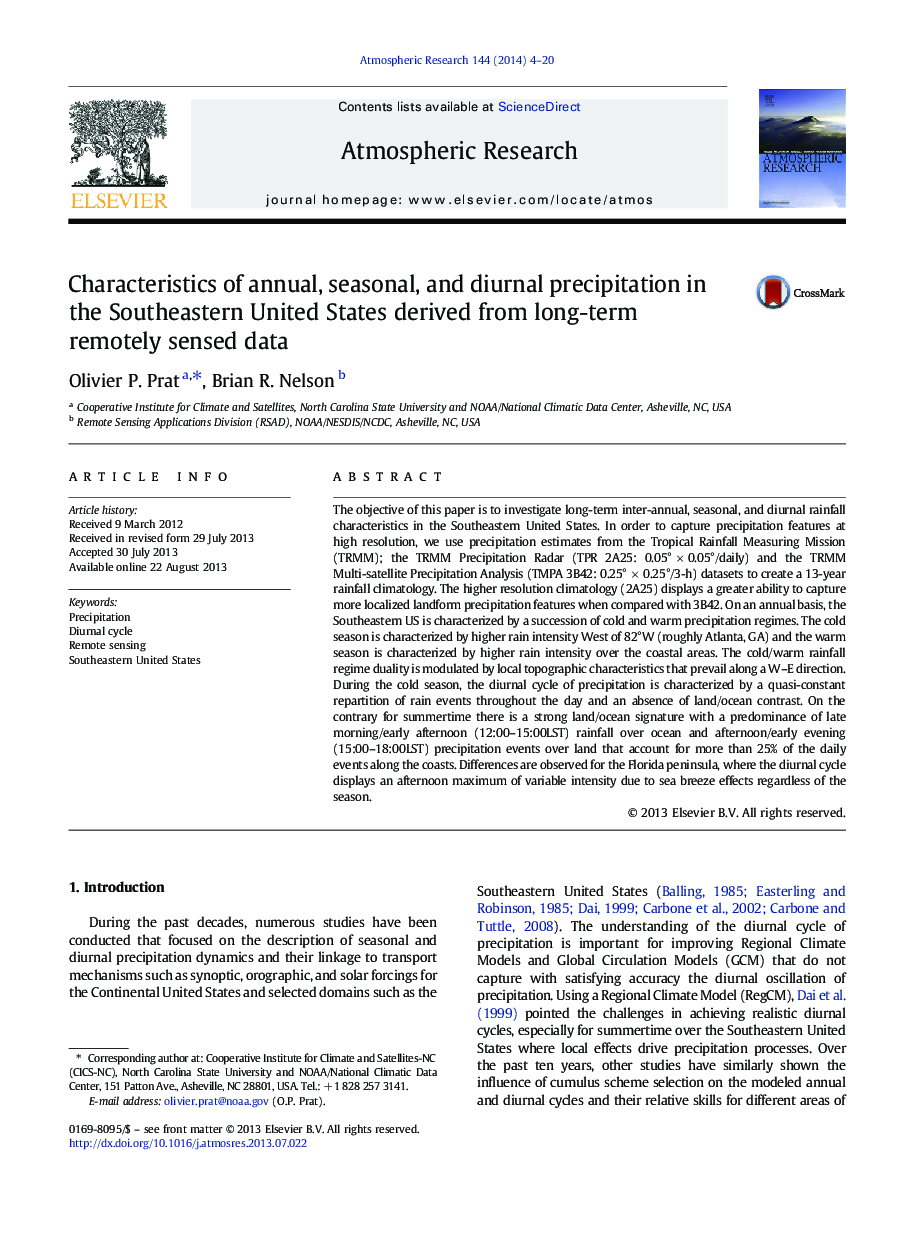| Article ID | Journal | Published Year | Pages | File Type |
|---|---|---|---|---|
| 6343590 | Atmospheric Research | 2014 | 17 Pages |
Abstract
The objective of this paper is to investigate long-term inter-annual, seasonal, and diurnal rainfall characteristics in the Southeastern United States. In order to capture precipitation features at high resolution, we use precipitation estimates from the Tropical Rainfall Measuring Mission (TRMM); the TRMM Precipitation Radar (TPR 2A25: 0.05° Ã 0.05°/daily) and the TRMM Multi-satellite Precipitation Analysis (TMPA 3B42: 0.25° Ã 0.25°/3-h) datasets to create a 13-year rainfall climatology. The higher resolution climatology (2A25) displays a greater ability to capture more localized landform precipitation features when compared with 3B42. On an annual basis, the Southeastern US is characterized by a succession of cold and warm precipitation regimes. The cold season is characterized by higher rain intensity West of 82°W (roughly Atlanta, GA) and the warm season is characterized by higher rain intensity over the coastal areas. The cold/warm rainfall regime duality is modulated by local topographic characteristics that prevail along a W-E direction. During the cold season, the diurnal cycle of precipitation is characterized by a quasi-constant repartition of rain events throughout the day and an absence of land/ocean contrast. On the contrary for summertime there is a strong land/ocean signature with a predominance of late morning/early afternoon (12:00-15:00LST) rainfall over ocean and afternoon/early evening (15:00-18:00LST) precipitation events over land that account for more than 25% of the daily events along the coasts. Differences are observed for the Florida peninsula, where the diurnal cycle displays an afternoon maximum of variable intensity due to sea breeze effects regardless of the season.
Related Topics
Physical Sciences and Engineering
Earth and Planetary Sciences
Atmospheric Science
Authors
Olivier P. Prat, Brian R. Nelson,
